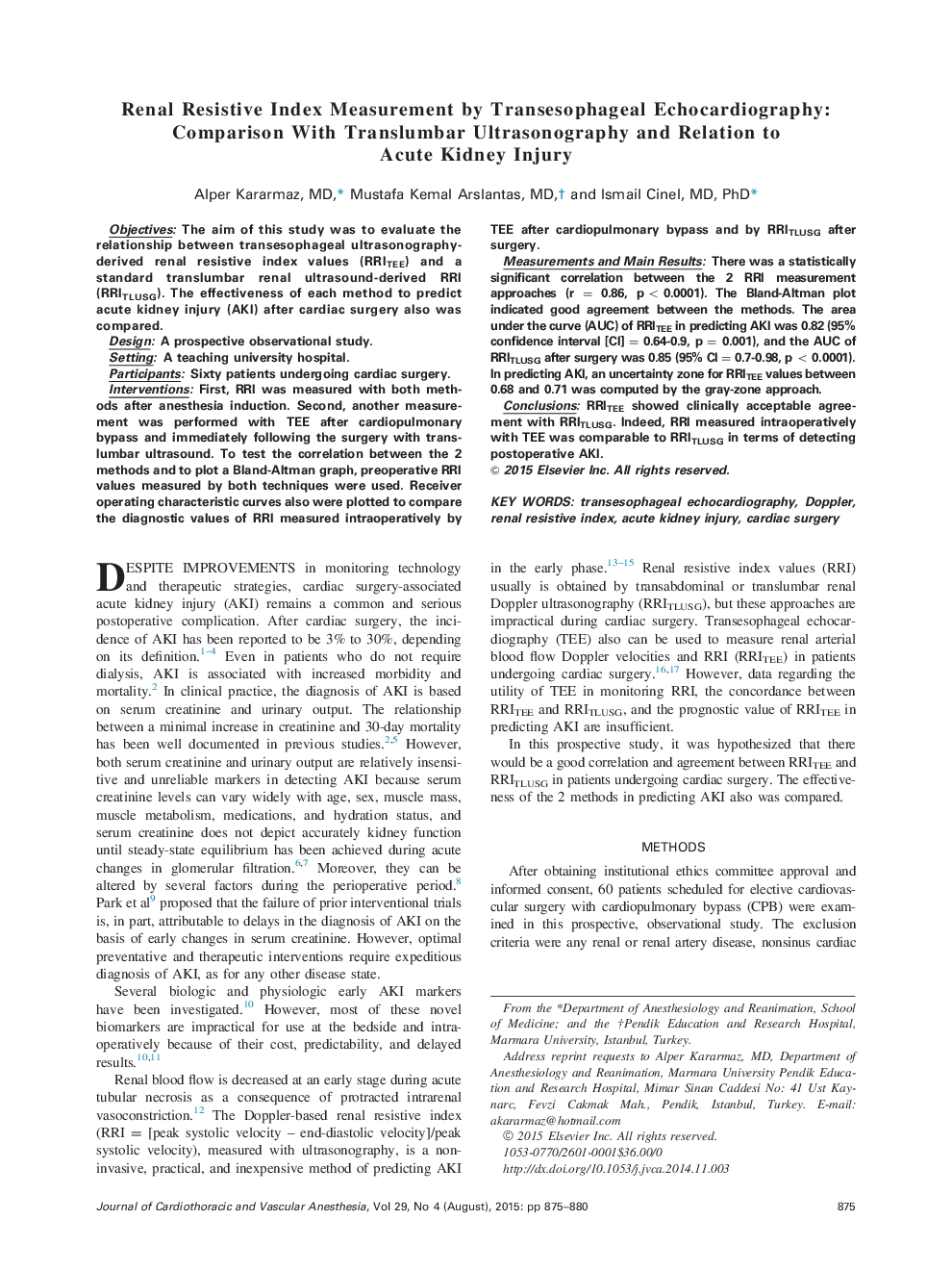| Article ID | Journal | Published Year | Pages | File Type |
|---|---|---|---|---|
| 2758739 | Journal of Cardiothoracic and Vascular Anesthesia | 2015 | 6 Pages |
ObjectivesThe aim of this study was to evaluate the relationship between transesophageal ultrasonography-derived renal resistive index values (RRITEE) and a standard translumbar renal ultrasound-derived RRI (RRITLUSG). The effectiveness of each method to predict acute kidney injury (AKI) after cardiac surgery also was compared.DesignA prospective observational study.SettingA teaching university hospital.ParticipantsSixty patients undergoing cardiac surgery.InterventionsFirst, RRI was measured with both methods after anesthesia induction. Second, another measurement was performed with TEE after cardiopulmonary bypass and immediately following the surgery with translumbar ultrasound. To test the correlation between the 2 methods and to plot a Bland-Altman graph, preoperative RRI values measured by both techniques were used. Receiver operating characteristic curves also were plotted to compare the diagnostic values of RRI measured intraoperatively by TEE after cardiopulmonary bypass and by RRITLUSG after surgery.Measurements and Main ResultsThere was a statistically significant correlation between the 2 RRI measurement approaches (r = 0.86, p<0.0001). The Bland-Altman plot indicated good agreement between the methods. The area under the curve (AUC) of RRITEE in predicting AKI was 0.82 (95% confidence interval [CI] = 0.64-0.9, p = 0.001), and the AUC of RRITLUSG after surgery was 0.85 (95% CI = 0.7-0.98, p<0.0001). In predicting AKI, an uncertainty zone for RRITEE values between 0.68 and 0.71 was computed by the gray-zone approach.ConclusionsRRITEE showed clinically acceptable agreement with RRITLUSG. Indeed, RRI measured intraoperatively with TEE was comparable to RRITLUSG in terms of detecting postoperative AKI.
